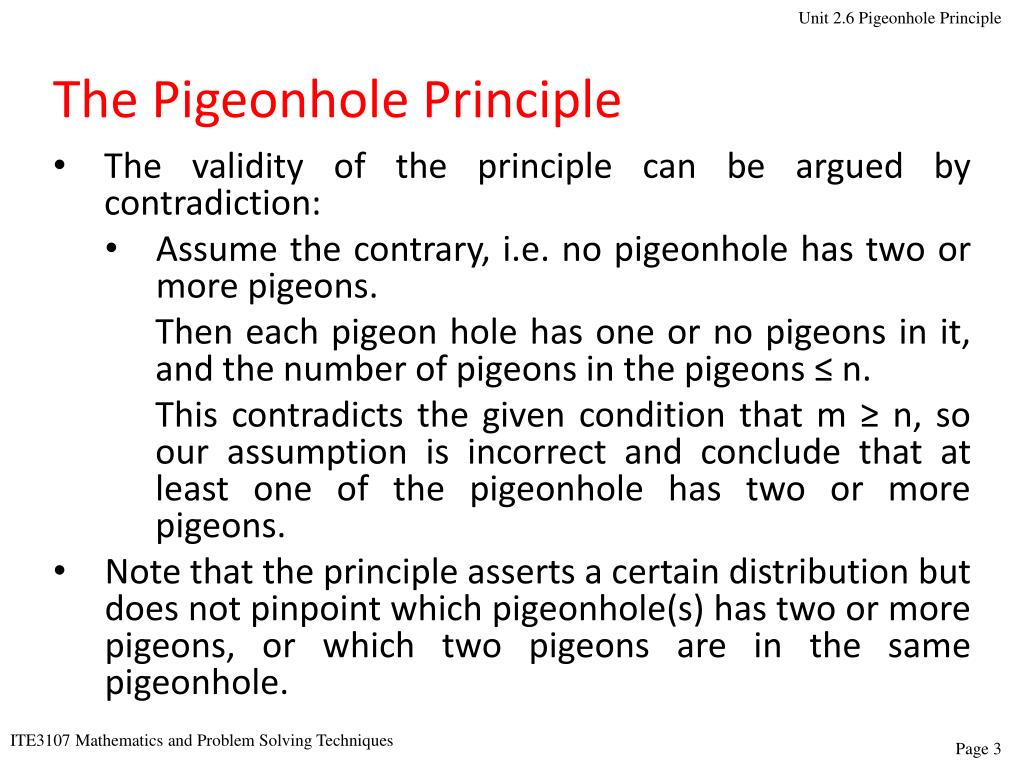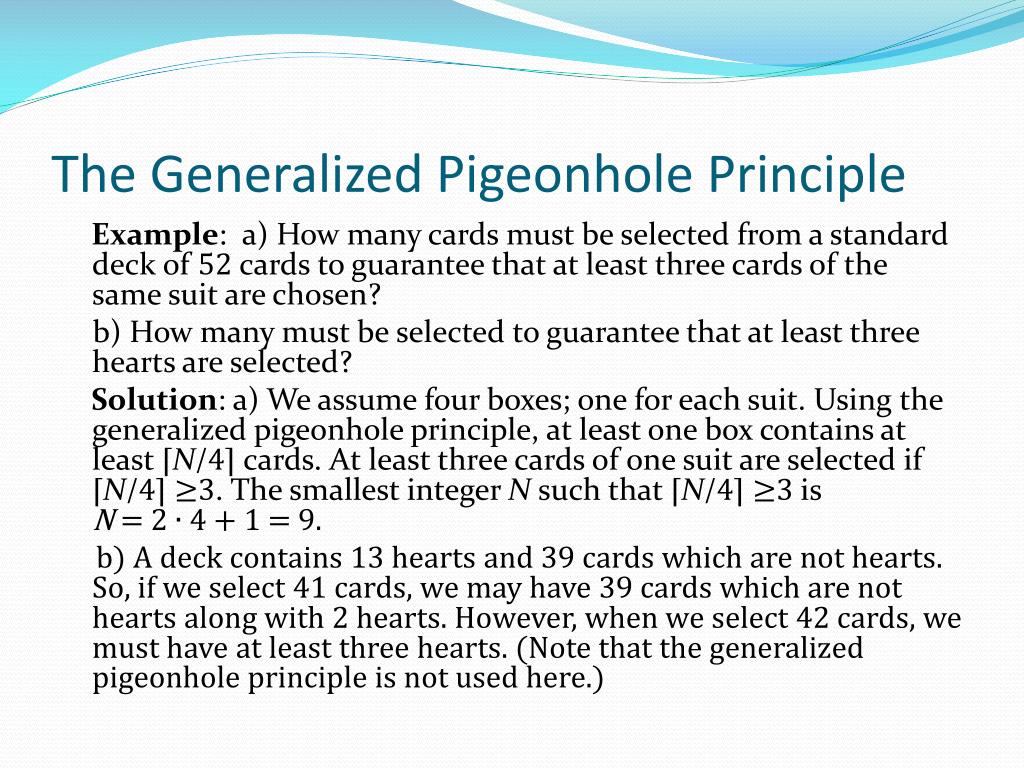

Let C be the subset of integer which is divisible by 7

Let B be the subset of integer which is divisible by 5 Solution: Let A be the subset of integer which is divisible by 3 Generalized pigeonhole principle is: - If n pigeonholes are occupied by kn+1 or more pigeons, where k is a positive integer, then at least one pigeonhole is. Then |U|= 1000 Find |S| where S is the set of such integer which is not divisible by 3, 5 or 7? Then the number m of the element which do not appear in any subset A 1,A 2.A r of U.Įxample: Let U be the set of positive integer not exceeding 1000. Let A 1,A 2.A r be the subset of Universal set U. So, according to the pigeonhole principle, there must be at least two people assigned to the same month. It is easy to see why: otherwise, each hole as at most 1 pigeon and the.

Solution: We assigned each person the month of the year on which he was born. Thus if 5 pigeons occupy 4 holes, then there must be some hole with at least 2 pigeons. Solution: Here n = 12 months are the PigeonholesĮxample2: Show that at least two people must have their birthday in the same month if 13 people are assembled in a room. Positive integers n and k are co-prime if their largest common divisor is 1. Generalized pigeonhole principle is: - If n pigeonholes are occupied by kn+1 or more pigeons, where k is a positive integer, then at least one pigeonhole is occupied by k+1 or more pigeons.Įxample1: Find the minimum number of students in a class to be sure that three of them are born in the same month. If n pigeonholes are occupied by n+1 or more pigeons, then at least one pigeonhole is occupied by greater than one pigeon.


 0 kommentar(er)
0 kommentar(er)
